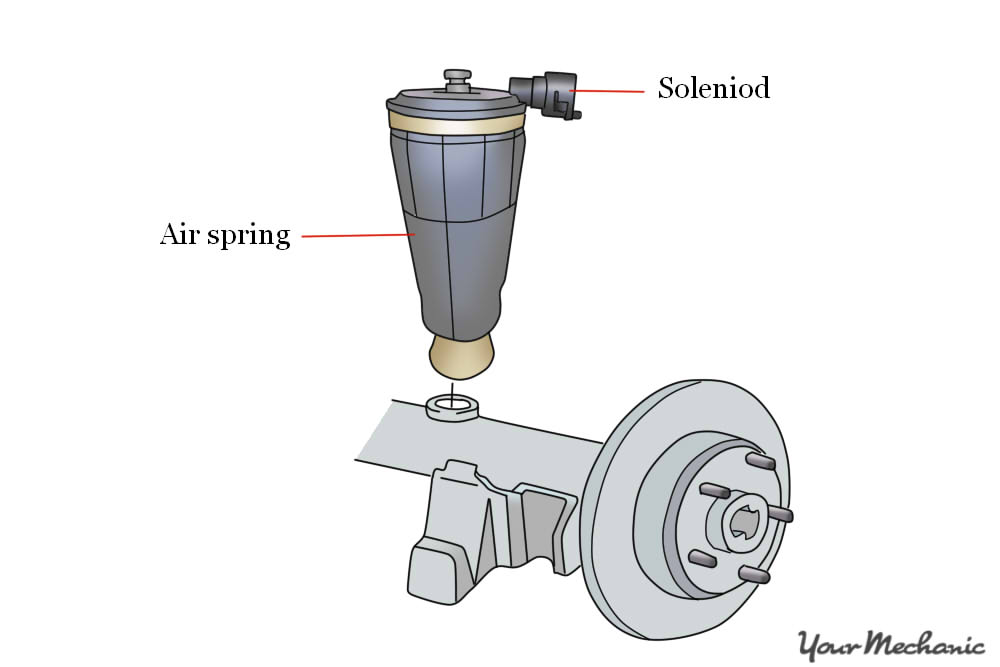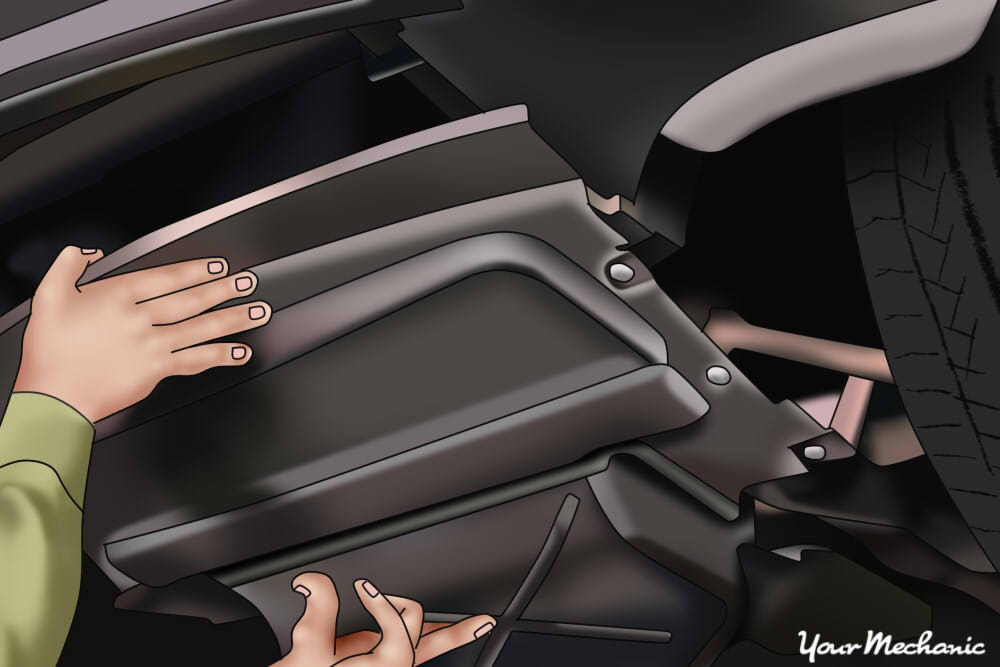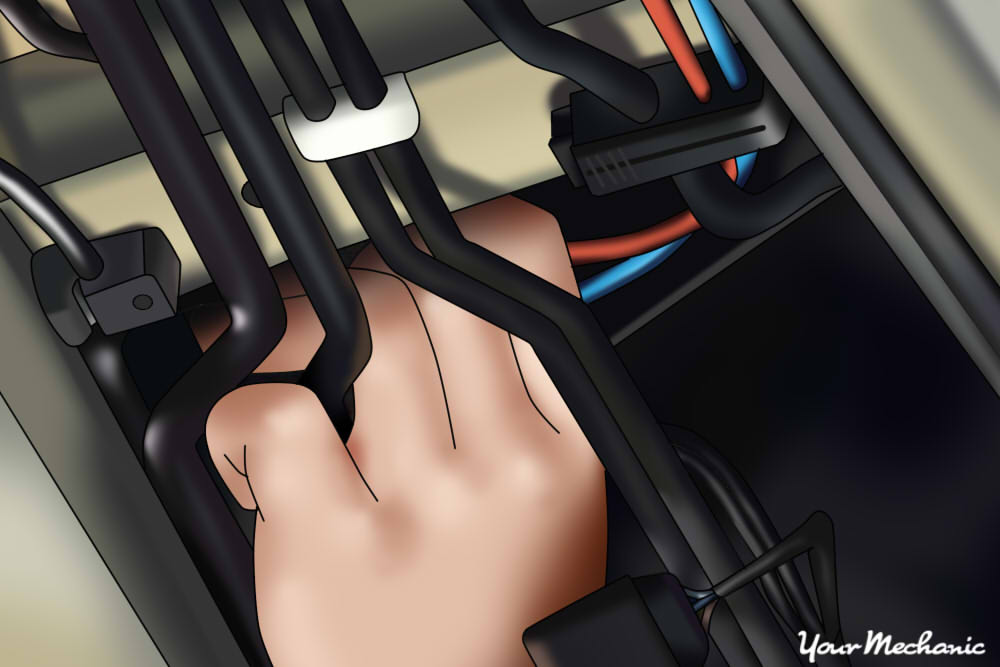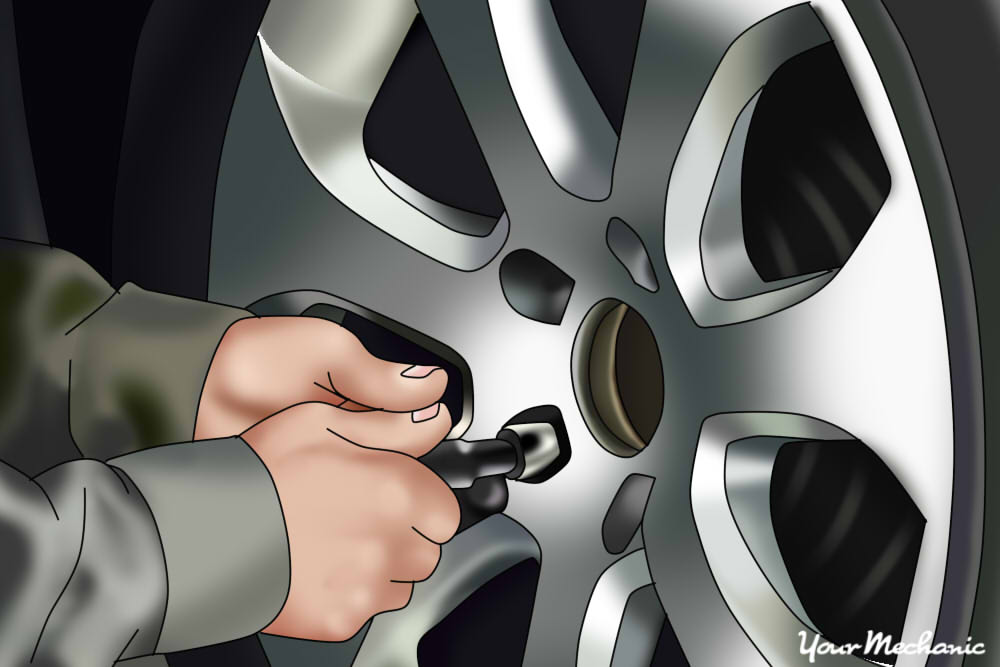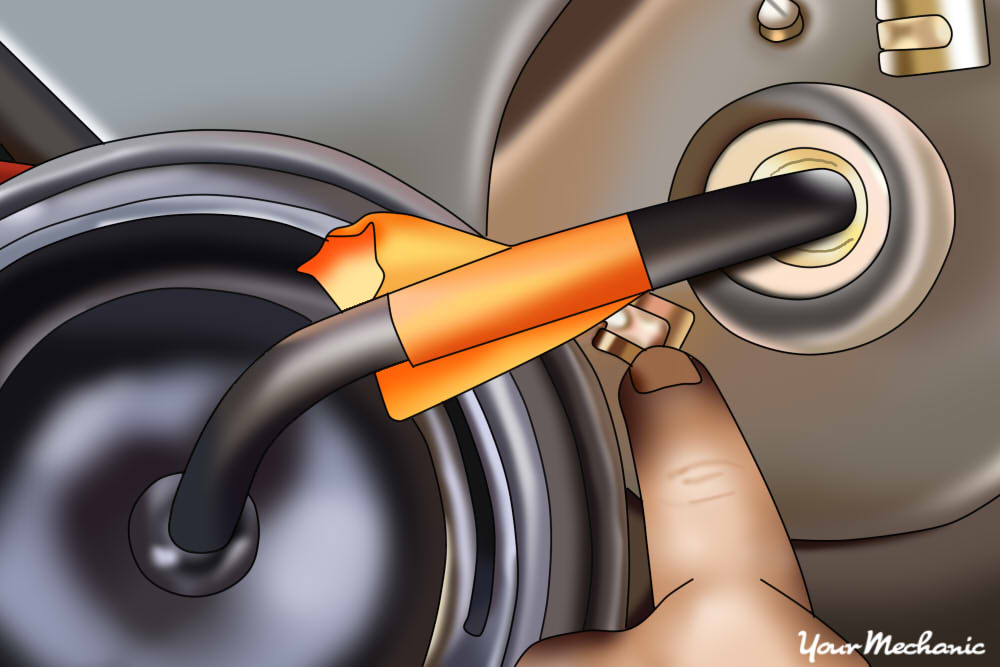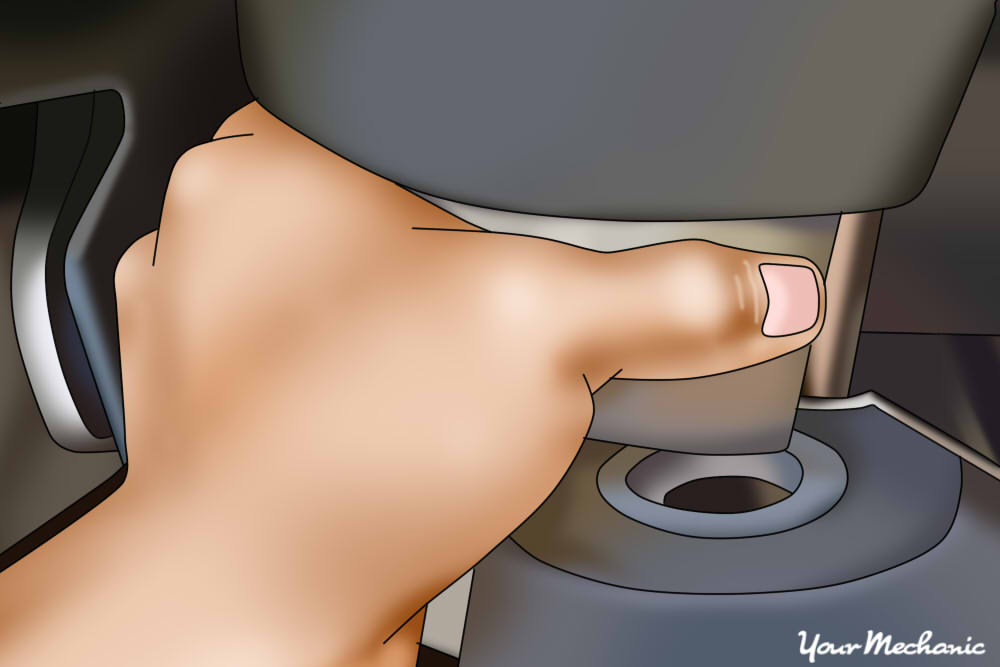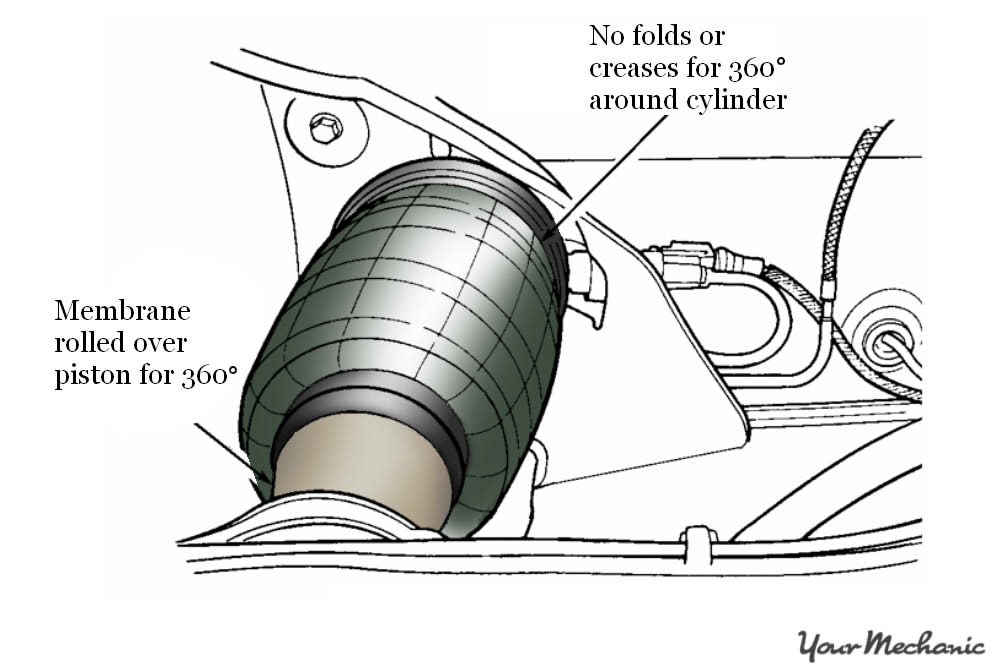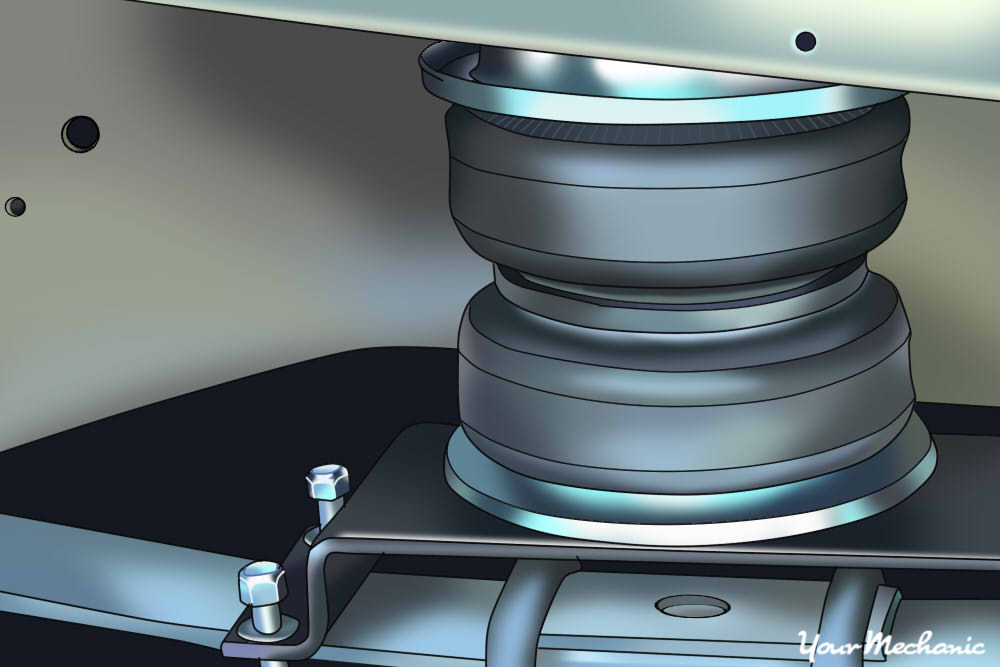

Air ride suspensions are common on heavy-duty trucks, luxury SUVs, and large sedans. The air ride suspension system replaces the traditional shock/strut/spring setup with a series of air bags that sit in between the ride axle and the body of the vehicle. The suspension air bag is like a heavy-duty balloon that is filled with air supplied from an onboard compressor. As the vehicle takes on more weight, a series of sensors trigger the air compressor to provide more air pressure for the bag to support this weight, or to drain some air depending on the circumstance.
Because it is a pneumatic device and prone to exposure to extreme elements and potentially being hit by sharp objects, it is possible for the suspension air bags to break or wear out before the vehicle hits 100,000 miles. Some of the more common symptoms of worn out or broken air bags include the onboard air compressor/pump continually cycling on and off, the vehicle sagging on one side, or the suspension feeling spongy and unresponsive.
Part 1 of 1: Replacing the suspension air bags
Materials Needed
- Combination wrench set and extensions
- Flat blade screwdriver
- Locking pliers
- Pry bar
- Replacement suspension air bags– always replace in pairs
- Safety equipment including safety glasses and gloves
- Socket wrench set (verify standard or metric before starting the job)
- Work light
Step 1: Remove power from the vehicle. Before taking off any parts, disconnect power from the battery. Remove the positive and negative terminals from the battery.
Step 2: Review the service manual for the air bag connection locations. The diagram above shows the basic setup of most air bag suspensions. The air bag itself will be connected to the body and to the rear axle. In order to gain access to the body connection, you will likely have to remove multiple interior components near the rear seat or in the trunk.
Some of the common parts and pieces that need to be removed in order to gain access to the air bag upper connection include the rear seat, the rear floorboards, and the rear side interior panels. As always, refer to your service manual for exact instructions.
- Warning: Make sure you have removed any interior parts before you attempt to raise your vehicle. Trying to complete this while the vehicle is on jack stands or on a hydraulic lift may cause the vehicle to become unstable and fall off the lift or jack stands.
Step 3: Raise the vehicle. You'll have to raise the rear of the vehicle in order to remove the rear tires and the suspension air bags. If you have access to a hydraulic lift, please use it. This job is much easier when you can work below the vehicle, especially when removing the lower clip connected to the axle.
If you need to use jacks, make sure to support the front wheel with wheel chocks. Only enter the vehicle to remove the top support clip if needed once the vehicle is on jacks or on the hydraulic lift.
Step 4: Remove the bottom covers. On most cars and SUVs, the air compressor and air lines that connect to the suspension air bags will be located underneath the undercarriage cover. Referring to your vehicle service manual, remove the bolts and clips on the side of the vehicle where the air compressor and line connections are located. Typically this is on the driver side.
Step 5: Remove the air lines connected to the passenger and driver side suspension air bags. Once you've removed the undercarriage covers, you will see a series of pneumatic lines, typically two different colors. The line on the right hand side (passenger side) supplies air from the compressor to the passenger side air bag, and likewise with the one on the left (driver side).
These lines are typically nylon connections, so you need to carefully remove them. Using a nylon pair of pliers, carefully loosen the air supply line on the driver side first. As you loosen the line, air will begin to leak. Do not remove the line all at once, as it may cause damage to the connection.
Slowly let the air drain from each line. As the air pressure decreases, continue to slowly unscrew the line connection until the air is completely drained from the system.
By removing power to the vehicle, you'll have shut off the air compressor's ability to recharge the system, so you don't have to unplug the onboard compressor. Remove both air line connections completely before proceeding.
Step 6: Remove the driver and passenger side rear tires. After you've disconnected the air supply lines underneath the vehicle, remove the driver and passenger side rear tires. You'll need to have them removed in order to access the suspension air bags.
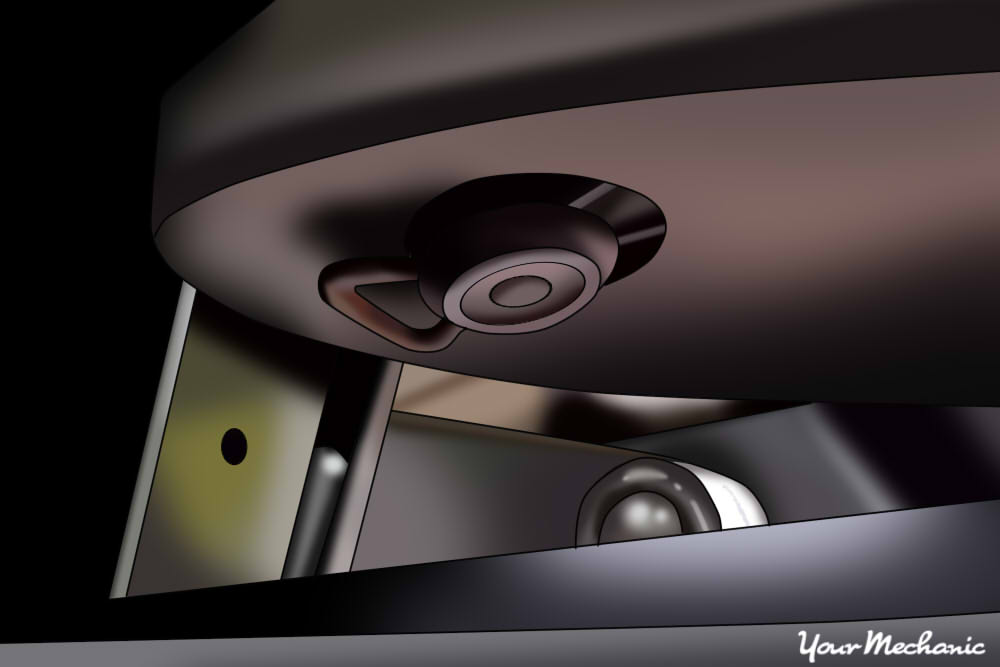
Step 7: Remove the bottom suspension air bag connection. Typically, the bottom air bag connection is secured to the axle with a cotter pin or a bolt.
As always, refer to your service manual for the exact instructions on how to remove the bottom air bag connection.
You should remove the bottom first, as it will allow the bag to compress more once you remove the top connection in the next step.
Step 8: Drain the air and remove the top air bag connection. Although you may have drained the air lines in Step 5 above, there will still be air inside the bag. Drain the air bag by first removing the heat cover on top of the connection.
Once the cover has been removed, slowly pull the air supply line from the air bag connection. As air starts to flow, stop pulling on the line. Let it drain slowly.
After the air has been drained from the bag, remove the clips (indicated in the above image) or bolts that secure the air bag onto the body of the vehicle. Refer to your service manual for exact instructions on how to complete this step.
Step 9: Remove the old air bag from the vehicle. When the air bag has been drained and you have the vehicle on jack stands, the bag itself will be fairly simple to remove.
First, collapse the air bag by holding the bottom of the bag with your hand and pressing it upward.
Second, once the bag has compressed, remove the bottom support off the axle as shown in the image above.
Third, after the bottom has been removed, pull down on the top of the air bag to remove it from the top connection. Pull the air bag through the wheel well to remove it from the vehicle.
Step 10: Install the new air bag. The process for installing a new air bag is in reverse of the removal. There is usually no prep work to complete before you install the new air bag, but you need to do this one side at a time and complete the process so you don't miss any steps.
It's important to remember that you need to replace both air bags before completing this task. Follow these basic steps, but refer to your service manual for specific instructions.
Insert the new air bag in between the axle and upper connection. Slide the upper connection into the support bracket. Slide the rear connection into the support bracket on the axle. Secure the upper connection by tightening the bolts or inserting the clips. Secure the air line to the upper portion of the air bag. Secure the heat shield or air bag cover.
Secure the bottom of the air bag by reinstalling the cotter pin or the bolts underneath the bracket to the axle. Reconnect the air line connections underneath the body that were removed in Step 5. Reconnect the bottom floorboards or undercarriage covers.
Reinstall the rear tires and torque to the manufacturer’s recommended settings. Reconnect the battery.
Step 11: Start the vehicle and let air bags fill. Before you lower the vehicle, make sure to start the engine to activate the air compressor. This will allow the air bags to fill while there is no load on the air bags. This will reduce pinching of the air bag and ensure the system is fully engaged when you lower weight onto the suspension.
Step 12: Lower the vehicle and inspect the air bags. As the bags fill, jack the vehicle up and remove the jack stands.
Slowly lower the vehicle once the air compressor stops running. This means the air bags are filled to the recommended inflation.
As you lower the vehicle, it will be common for the air compressor to restart. Once the vehicle has been lowered, check the air line connections and the bags themselves for any leaks.
If you've read this instructional article and are not 100% confident in completing this job on your own, contact the professional and local ASE certified mechanics at YourMechanic. They have the right knowledge, experience and tools to complete a suspension air bag replacement job very easily and affordably.



